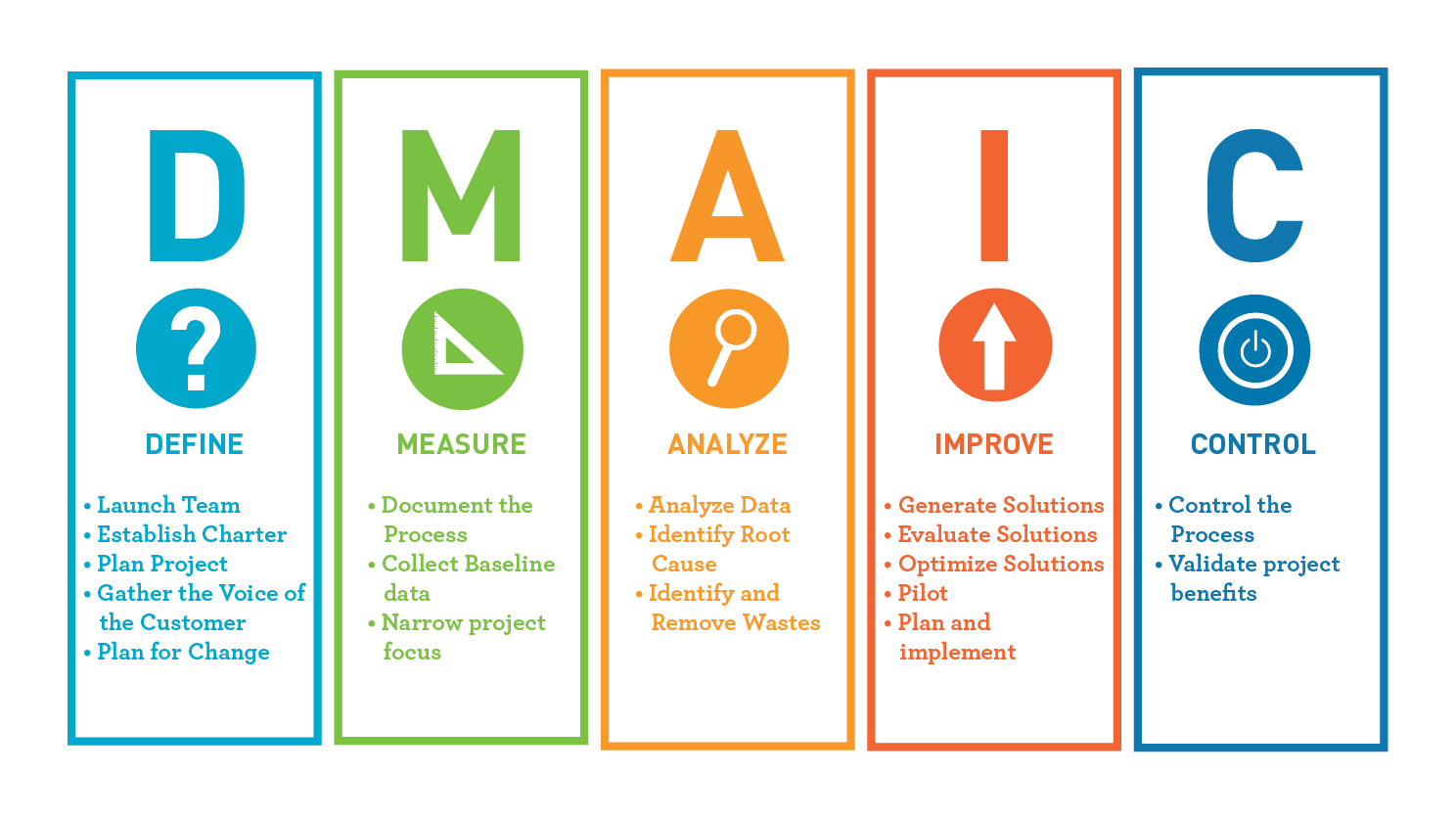DMAIC is a problem-solving methodology commonly used in Six Sigma, a data-driven approach for process improvement and quality management. DMAIC stands for Define, Measure, Analyze, Improve, and Control, which are the five key phases of the methodology. Let’s explore each phase in more detail:
- Define: In this phase, the project goals and objectives are clearly defined. The focus is on understanding the problem, identifying customer requirements, and defining the scope of the project. It involves creating a project charter, establishing the project team, and setting measurable goals that align with the organization’s strategic objectives.
- Measure: The measure phase involves gathering data to assess the current state of the process or system. This includes identifying the key process metrics, collecting relevant data, and creating a baseline performance measurement. The data collected helps in quantifying the problem, understanding process variation, and identifying areas of improvement.
- Analyze: Once the data has been collected, the analyze phase aims to identify the root causes of the problem. Various tools and techniques such as process mapping, cause-and-effect diagrams, statistical analysis, and hypothesis testing are used to analyze the data and identify the factors contributing to the issue. The goal is to gain a deep understanding of the process and its influencing variables.
- Improve: In the improve phase, potential solutions are generated and implemented to address the identified root causes. This involves brainstorming ideas, evaluating alternatives, and selecting the most appropriate solutions. The solutions are then tested and implemented on a small scale, allowing for data-driven evaluation of their effectiveness. The focus is on achieving process optimization and driving improvements that align with the project objectives.
- Control: The control phase aims to sustain the improvements achieved and prevent the problem from recurring. It involves establishing control measures, monitoring key process metrics, and implementing control plans to ensure that the gains made during the improve phase are sustained over time. Documentation, training, and ongoing monitoring and evaluation are important aspects of this phase.
Throughout the DMAIC process, a structured and data-driven approach is followed, enabling organizations to systematically identify, analyze, and resolve problems. It emphasizes the use of statistical tools and techniques to support decision-making and ensure that improvements are based on reliable data. DMAIC provides a framework for continuous improvement and a structured approach for tackling complex issues within an organization.
It’s important to note that DMAIC is just one of the methodologies within the broader Six Sigma framework, and it is typically used for projects focused on problem-solving and process improvement.
 (909) 987-1774
(909) 987-1774 Email Us
Email Us








